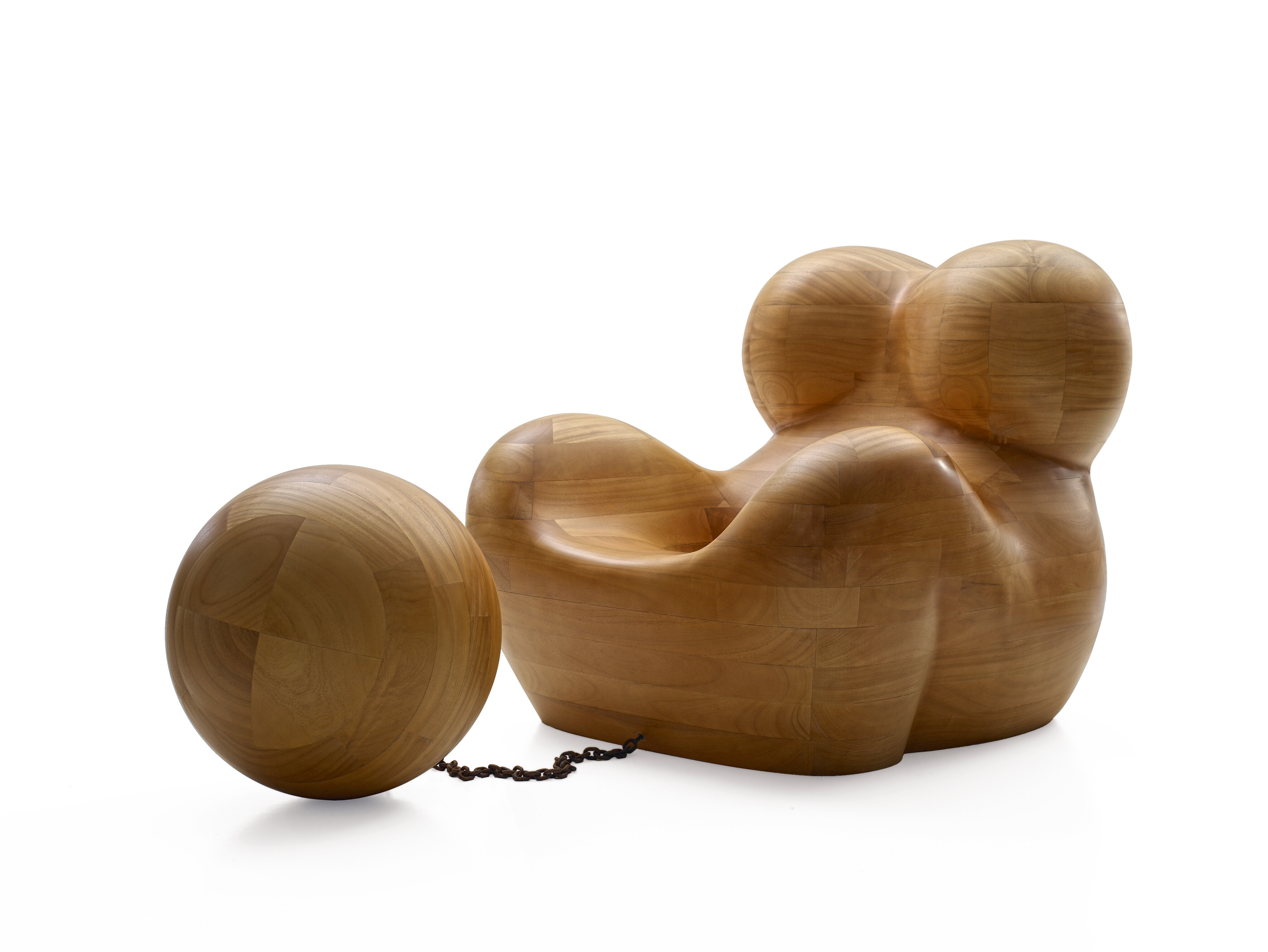Objects in the Rearview Mirror are Closer than they Appear
Those who forget design history are doomed to repeat it — as is sadly evident from the banality of the retread modernism that still dominates much of the built environment. Already in the late 1970s, a rebellion against this aesthetic orthodoxy was underway, eventually going by the controversial name of postmodernism. For the figures in this movement, among them the brilliant and caustic Alessandro Mendini, design history was not something to simply repeat. Rather, it was a quarry, from which ideas and forms could be appropriated and re-mixed. Mendini created one of the ultimate icons of the method in his Proust chair of 1978. His Poltrona White Gold seen here recalls the broad, baroque proportions of that earlier work, as well as its pointillist surface, here refracted through the use of mosaic and metallic leaf.
Gaetano Pesce, a peer of Mendini’s but a sworn enemy of postmodernism, which he considered to be a shallow parade of borrowed styles, has nonetheless allowed himself periodic returns to his own past catalogue. In this all-wood version of his famous UP 5 & 6 (1969), originally realized in self-expanding foam, he too uses material transformation to comment on the changing status of his own work. What had been a purposeful provocation — in Pesce’s eyes, a statement of feminist intent, depicting the female body as a prisoner with ball and chain — has become an immovable monument.
Faced with these two examples of grand masters looking back at their own early work, one wonders what young phenoms like Thomas Barger might be getting up to by the time the 2070s come along. He’s at the outset of his career, but every indication is that he will be making important work for decades to come: witness his Heaven Bound chair, with its combination of abstract and autobiographical elements, cartoonish cutouts alongside downhome touches like the basket underneath the woven seat.
DNA is a collaborative essay project, intertwining three gallery programs into a single, generative presentation.





